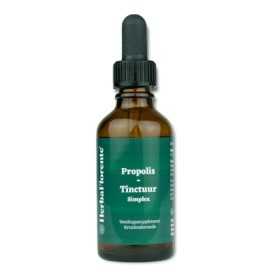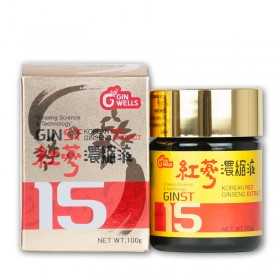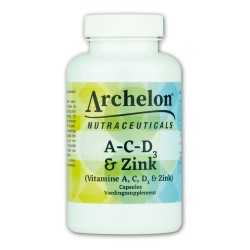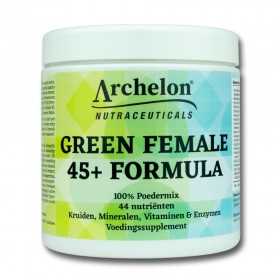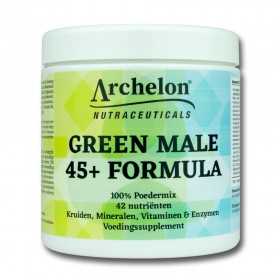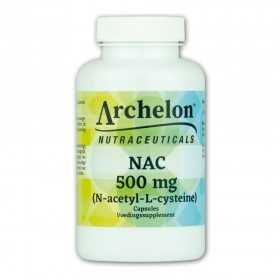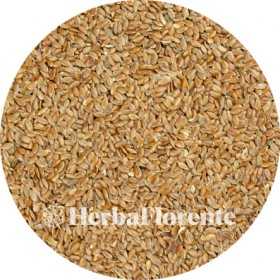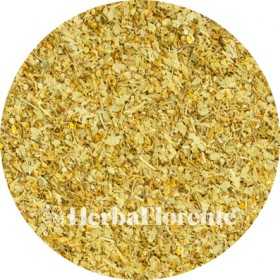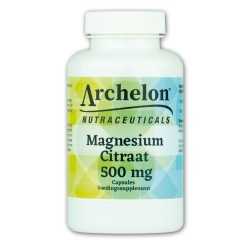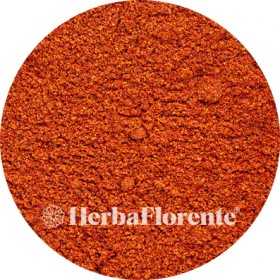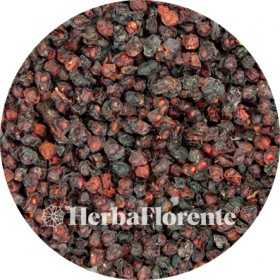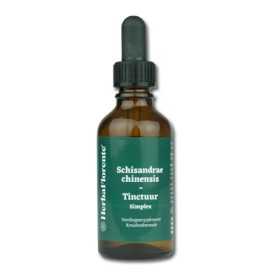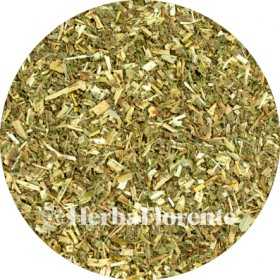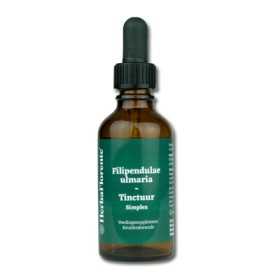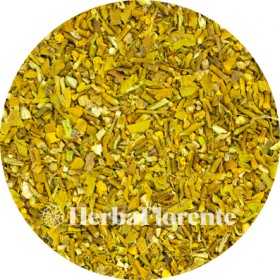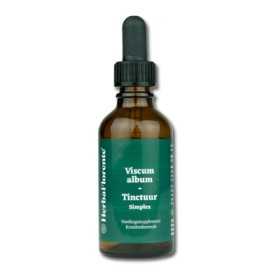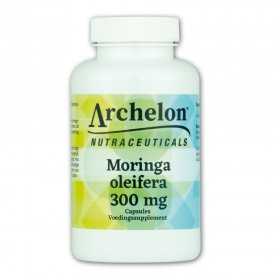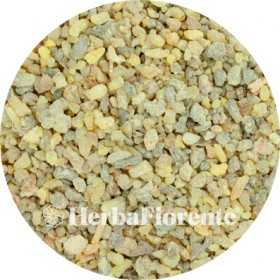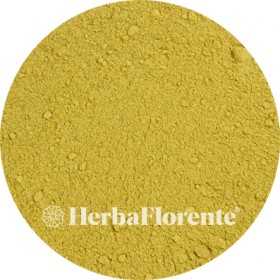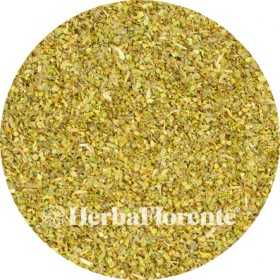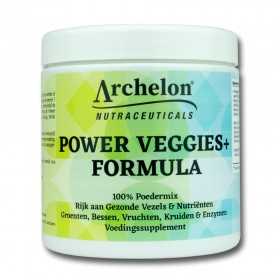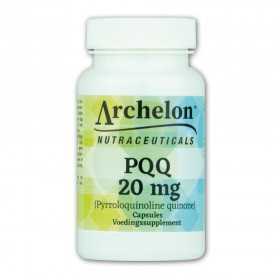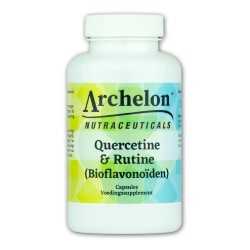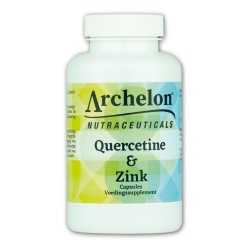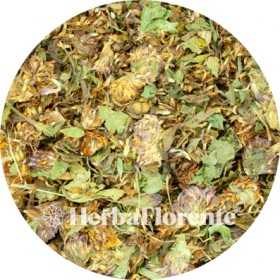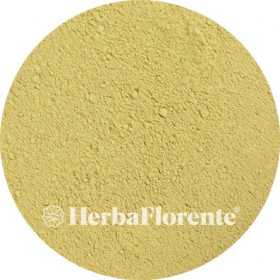Heart
There are 131 products.
Lijnzaad - Linum usitatissimum
Flaxseed is rich in omega-3 fatty acids, with an impressive 55% alpha-linolenic acid (ALA) content. It also contains tocopherols, carotenoids, minerals and lignans (phytosterols). Also, about 20% of its fatty acid is omega 9 (oleic acid). The Nutrition Center emphasizes the beneficial effects of omega-3 fatty acids on the heart and blood vessels. The flax plant (Linum usitatissimum), from which linseed is harvested, is distributed worldwide and humanity has used linseed since 7000 BC.
€2.00
From: €2.00
Lime tree Blossom - Tiliae officinalis
The lime tree (Tilia) is native to the Benelux and is known for its remarkable lifespan, which can easily exceed 1000 years. This majestic tree can reach a height of 20 to 30 meters, depending on its growing conditions. The Latin name for the lime tree is Tilia.
Although the lime tree is widespread in Europe, it is not found in the northernmost and southernmost parts of the continent. Outside Europe, the lime is also found in parts of Asia, but to a much lesser extent.
The tree blooms in the months of June and July. The lime blossom produces a lot of honey, and the flowers can be used to make herbal tea.
Although the lime tree is widespread in Europe, it is not found in the northernmost and southernmost parts of the continent. Outside Europe, the lime is also found in parts of Asia, but to a much lesser extent.
The tree blooms in the months of June and July. The lime blossom produces a lot of honey, and the flowers can be used to make herbal tea.
€5.00
From: €5.00
Magnesium Citrate - 500 mg
Magnesium is available in various organic forms such as magnesium citrate and the more absorbable organic form magnesium malate. Magnesium is also an important mineral for the body, as it is involved in many processes. Magnesium is essential for more than 300 enzymatic processes in the body, including protein synthesis. But also the electrolyte balance, the nervous system, energy management, normal cell division, concentration, memory and mood. Magnesium is also good for the muscles, bones and teeth.
€17.95
Magnolia Berry (Schisandra) - Schisandrae chinensis
Schisandra, also known as the Schisandra berry (Schisandra chinensis), is known as one of the most important herbs in traditional Chinese medicine for promoting energy and vitality, and reducing stress. This dark red berry is rich in antioxidants, strengthens the immune system and promotes overall vitality. In addition, it provides protection and support to the liver and respiratory tract.
Schisandra has been used in traditional Chinese herbal medicine for over 2000 years. Only the berry with its seeds are used, harvested after the first frost and then dried in the sun. Schisandra is known as one of the most important herbs for promoting vitality.
Schisandra has been used in traditional Chinese herbal medicine for over 2000 years. Only the berry with its seeds are used, harvested after the first frost and then dried in the sun. Schisandra is known as one of the most important herbs for promoting vitality.
€7.50
From: €7.50
Magnolia Berry (Schisandra) - Schisandrae chinensis - Whole
Schisandra, also known as the Schisandra berry (Schisandra chinensis), is known as one of the most important herbs in traditional Chinese medicine for promoting energy and vitality, and reducing stress. This dark red berry is rich in antioxidants, strengthens the immune system and promotes overall vitality. In addition, it provides protection and support to the liver and respiratory tract.
Schisandra has been used in traditional Chinese herbal medicine for over 2000 years. Only the berry with its seeds are used, harvested after the first frost and then dried in the sun. Schisandra is known as one of the most important herbs for promoting vitality.
Schisandra has been used in traditional Chinese herbal medicine for over 2000 years. Only the berry with its seeds are used, harvested after the first frost and then dried in the sun. Schisandra is known as one of the most important herbs for promoting vitality.
€6.95
From: €6.95
Magnolia Berry Tincture - Schisandrae chinensis Tincture
Single herbal tincture made with dried berries of Schisandrae chinensis (Magnolia Berry).
Schisandra, also known as the Schisandra berry (Schisandra chinensis), is known as one of the most important herbs in traditional Chinese medicine for promoting energy and vitality, and reducing stress. This dark red berry is rich in antioxidants, strengthens the immune system and promotes overall vitality. In addition, it provides protection and support to the liver and respiratory tract.
Schisandra, also known as the Schisandra berry (Schisandra chinensis), is known as one of the most important herbs in traditional Chinese medicine for promoting energy and vitality, and reducing stress. This dark red berry is rich in antioxidants, strengthens the immune system and promotes overall vitality. In addition, it provides protection and support to the liver and respiratory tract.
€12.95
Maitake Extract - 420 mg
Maitake (Grifola frondosa), also known as oak hare, originates in the Far East and plays an important role in Chinese herbalism. This fungus, rich in various bioactive substances, is versatile for various applications. The name "maitake" comes from Japanese and literally means 'dancing mushroom', referring to the joy people experienced when finding it.
In nature, maitake mainly grows as a parasite on the roots or stumps of deciduous trees. For thousands of years, maitake has been valued in traditional Chinese herbalism for its nutritional value. This brown, lush fungus can sometimes weigh up to twenty kilos. With its delicious, aromatic flavor, maitake is a popular fungus in Japanese cuisine.
In nature, maitake mainly grows as a parasite on the roots or stumps of deciduous trees. For thousands of years, maitake has been valued in traditional Chinese herbalism for its nutritional value. This brown, lush fungus can sometimes weigh up to twenty kilos. With its delicious, aromatic flavor, maitake is a popular fungus in Japanese cuisine.
€34.95
Meadowsweet - Filipendulae ulmaria
The meadowsweet (Filipendula ulmaria) is a perennial plant belonging to the rose family (Rosaceae). It is an erect plant that can reach a height of 0.6 to 2 meters. The flowers of the meadowsweet are numerous and cream-colored, with a width of 0.4 to 1 cm and each consisting of five petals, which have a strong almond scent. The leaves are pinnately compound, with a large top leaflet that is palmately split.
In the past, meadowsweet was used as a remedy for biliary and kidney diseases, as well as for gout and nerve pain. The dried leaves and flowers were used to make tea, which was given for fever.
In the past, meadowsweet was used as a remedy for biliary and kidney diseases, as well as for gout and nerve pain. The dried leaves and flowers were used to make tea, which was given for fever.
€2.00
From: €2.00
Meadowsweet Tincture - Filipendulae ulmaria Tincture
Single herbal tincture made with dried herb of Filipendulae ulmaria (Meadsweet).
The meadowsweet (Filipendula ulmaria) is a perennial plant belonging to the rose family (Rosaceae). It is an erect plant that can reach a height of 0.6 to 2 meters. The flowers of the meadowsweet are numerous and cream-colored, with a width of 0.4 to 1 cm and each consisting of five petals, which have a strong almond scent. The leaves are pinnately compound, with a large top leaflet that is palmately split.
In the past, meadowsweet was used as a remedy for biliary and kidney diseases, as well as for gout and nerve pain. The dried leaves and flowers were used to make tea, which was given for fever.
The meadowsweet (Filipendula ulmaria) is a perennial plant belonging to the rose family (Rosaceae). It is an erect plant that can reach a height of 0.6 to 2 meters. The flowers of the meadowsweet are numerous and cream-colored, with a width of 0.4 to 1 cm and each consisting of five petals, which have a strong almond scent. The leaves are pinnately compound, with a large top leaflet that is palmately split.
In the past, meadowsweet was used as a remedy for biliary and kidney diseases, as well as for gout and nerve pain. The dried leaves and flowers were used to make tea, which was given for fever.
€10.95
Mistletoe - Viscum alba
Mistletoe (Viscum album) is an evergreen plant belonging to the sandalwood family, known by various names such as mistletoe, mistletoe, or birdlime. Mistletoe naturally occurs in Europe, Northwest Africa, West and Central Asia. It is a semi-parasite that thrives in the wild on numerous host species.
Over the centuries, mistletoe has become intertwined with numerous legends and symbolic meanings. To the Druids, the mistletoe of an oak tree was sacred and associated with ushering in the new year, symbolic of fertility and good luck. In Norse mythology, mistletoe symbolizes peace and love, with people who meet under it kissing each other as a sign of this peace and love.
Over the centuries, mistletoe has become intertwined with numerous legends and symbolic meanings. To the Druids, the mistletoe of an oak tree was sacred and associated with ushering in the new year, symbolic of fertility and good luck. In Norse mythology, mistletoe symbolizes peace and love, with people who meet under it kissing each other as a sign of this peace and love.
€2.00
From: €2.00
Mistletoe Tincture - Viscum album Tincture
Single herbal tincture made with dried herb of Viscum album (Mistletoe).
Mistletoe (Viscum album) is an evergreen plant belonging to the sandalwood family, known by various names such as mistletoe, mistletoe, or birdlime. Mistletoe naturally occurs in Europe, Northwest Africa, West and Central Asia. It is a semi-parasite that thrives in the wild on numerous host species.
Mistletoe (Viscum album) is an evergreen plant belonging to the sandalwood family, known by various names such as mistletoe, mistletoe, or birdlime. Mistletoe naturally occurs in Europe, Northwest Africa, West and Central Asia. It is a semi-parasite that thrives in the wild on numerous host species.
€9.95
Moringa oleifera - 300 mg
Moringa oleifera, also known as the 'tree of life', thrives in Africa and Asia and is known for its rich nutritional value. The tree is a treasure trove of more than dozens of nutrients, including no fewer than 47 antioxidants. Containing minerals, proteins, vitamins, beta-carotene, amino acids and various phenols in abundance, the leaves of the moringa are the true storehouse of nutritional value.
For centuries, Asian and African cultures have recognized the benefits of moringa oleifera. The tree has become an integral part of their daily diet due to its versatile uses and nutritional value. Because of its abundant benefits, moringa oleifera is often affectionately referred to as "the tree of life."
For centuries, Asian and African cultures have recognized the benefits of moringa oleifera. The tree has become an integral part of their daily diet due to its versatile uses and nutritional value. Because of its abundant benefits, moringa oleifera is often affectionately referred to as "the tree of life."
€19.95
Olibanum Idian - Boswelia serrata
Olibanum Idian (Boswellia serrata) is a medium to large deciduous tree with a slightly open crown and branches that hang slightly. This tree belongs to the Burseraceae family and is native to India and the Punjab area.
Olibanum Idian is extracted from the resin of the tree. Extracts of Boswellia serrata have been clinically studied for osteoarthritis and joint pain, showing a slight improvement in pain and function. In traditional Ayurveda it is used for diabetes.
Boswellia serrata produces several forms of boswellic acids, such as β-boswellic acid, acetyl-β-boswellic acid, 11-keto-β-boswellic acid and acetyl-11-keto-β-boswellic acid.
Olibanum Idian is extracted from the resin of the tree. Extracts of Boswellia serrata have been clinically studied for osteoarthritis and joint pain, showing a slight improvement in pain and function. In traditional Ayurveda it is used for diabetes.
Boswellia serrata produces several forms of boswellic acids, such as β-boswellic acid, acetyl-β-boswellic acid, 11-keto-β-boswellic acid and acetyl-11-keto-β-boswellic acid.
€2.60
From: €2.60
Olive - Olea europaea
Olive leaves, from the wild olive tree (Olea europaea), are naturally rich in antioxidants. Originally native to western Asia, Egypt and Syria, these trees are now a distinctive sight throughout the Mediterranean region, as well as in regions such as South America, the southern United States, southern Australia and the tropics. Olive leaf tea has been consumed in the Mediterranean for centuries, and this is not surprising given the known antioxidant properties of olive leaves. It is therefore no coincidence that the olive tree is often referred to as the 'tree of life'.
€2.25
From: €2.25
Oregano - Origani cetici
Oregano also known as wild marjoram, is a special herb that has been used for thousands of years for its beneficial properties. It supports healthy intestinal flora and promotes digestion. In addition, oregano has benefits for the heart, blood vessels and blood pressure.
The herb belongs to the Lamiaceae family, which also includes rosemary, thyme and mint. Oreganois is particularly rich in carvacrol, which gives it its characteristic spicy and slightly bitter taste. The most vigorous form of oregano grows in Mediterranean mountain areas, thriving on calcareous soil. During the spring, wild oregano blooms and residents go into the mountains to collect these aromatic herbs.
The herb belongs to the Lamiaceae family, which also includes rosemary, thyme and mint. Oreganois is particularly rich in carvacrol, which gives it its characteristic spicy and slightly bitter taste. The most vigorous form of oregano grows in Mediterranean mountain areas, thriving on calcareous soil. During the spring, wild oregano blooms and residents go into the mountains to collect these aromatic herbs.
€3.00
From: €3.00
Oregano - Origani vulgaris
Oregano (Origanum vulgare) also known as wild marjoram, is a special herb that has been used for thousands of years for its beneficial properties. It supports healthy intestinal flora and promotes digestion. In addition, oregano has benefits for the heart, blood vessels and blood pressure.
The herb belongs to the Lamiaceae family, which also includes rosemary, thyme and mint. Oreganois is particularly rich in carvacrol, which gives it its characteristic spicy and slightly bitter taste. The most vigorous form of oregano grows in Mediterranean mountain areas, thriving on calcareous soil. During the spring, wild oregano blooms and residents go into the mountains to collect these aromatic herbs.
The herb belongs to the Lamiaceae family, which also includes rosemary, thyme and mint. Oreganois is particularly rich in carvacrol, which gives it its characteristic spicy and slightly bitter taste. The most vigorous form of oregano grows in Mediterranean mountain areas, thriving on calcareous soil. During the spring, wild oregano blooms and residents go into the mountains to collect these aromatic herbs.
€2.80
From: €2.80
Power Berries+ Formula
Our Power Berries+ Formula provides a balanced blend of nutrients specially formulated to support your overall health. This unique formula is packed with healthy fiber and essential nutrients, including polyphenols, phytonutrients, antioxidants and natural vitamins.
€57.50
Power Veggies+ Formula
Our Power Veggies+ Formula provides a balanced blend of essential nutrients to support your overall health. With an abundance of healthy fibers and nutrients, is Power Veggies+ Formula specially formulated to nourish and glow your body.
€59.50
PQQ (Pyrroloquinoline quinone) - 20 mg
PQQ, abbreviated for Pyrroloquinoline quinone, is a substance similar to a B vitamin and mainly found in plants. It is also sometimes called 'super Q10' because of its similar properties. Although PQQ has been around for a long time, it was only recently discovered. This water-soluble substance plays a role in enzymatic reactions and supports enzymes in their function. In addition, PQQ has various other properties.
A lot of research is currently being done into the exact composition and function of PQQ. This substance occurs naturally in various foods, such as spinach, kiwi, soy beans (especially green and fermented soy beans such as nattō), mustard and tofu. Green tea is also a rich source of PQQ.
A lot of research is currently being done into the exact composition and function of PQQ. This substance occurs naturally in various foods, such as spinach, kiwi, soy beans (especially green and fermented soy beans such as nattō), mustard and tofu. Green tea is also a rich source of PQQ.
€42.95
Psyllium husks (Premium Psyllium Fiber) - Psylli flavum Testa
Psyllium husks, derived from Plantago psyllium, are a blend of partially soluble and fermentable fibers that are much appreciated by people looking to promote their gut health. They are a valuable addition to your daily fiber intake, but it is crucial to drink enough water throughout the day for optimal results.
With more than 80% fiber, psyllium seed consists mainly of 70% soluble and 30% insoluble fiber. Once psyllium comes into contact with water, it forms a gel that can absorb up to ten times its own weight in water. This increases the amount of fluid in the intestines, making stools softer, but don't forget to drink enough water!
With more than 80% fiber, psyllium seed consists mainly of 70% soluble and 30% insoluble fiber. Once psyllium comes into contact with water, it forms a gel that can absorb up to ten times its own weight in water. This increases the amount of fluid in the intestines, making stools softer, but don't forget to drink enough water!
€2.80
From: €2.80
Quercetin & Rutin (Bioflavonoids)
Quercetin is a flavonoid, also called bioflavonoid. This natural plant compound is found in various plants, fruits and vegetables. Flavonoids are responsible for the vibrant colors (pigments) in these plants and come in various shades. They play a crucial role in plant metabolism, regulate growth, and provide protection against UV light, oxidation and heat.
Rutin, also known as a flavonoid or bioflavonoid, is a naturally occurring substance in vegetables, fruits, herbs and plants. It is known for its vibrant pigmentation and can have different colors. Rutin plays several important roles in plants, such as regulating growth, protecting against UV radiation, oxidation and heat, and maintaining plant metabolism.
Rutin, also known as a flavonoid or bioflavonoid, is a naturally occurring substance in vegetables, fruits, herbs and plants. It is known for its vibrant pigmentation and can have different colors. Rutin plays several important roles in plants, such as regulating growth, protecting against UV radiation, oxidation and heat, and maintaining plant metabolism.
€32.95
Quercetin & Zinc
Quercetin is a flavonoid, also called bioflavonoid. This natural plant compound is found in various plants, fruits and vegetables. Flavonoids are responsible for the vibrant colors (pigments) in these plants and come in various shades. They play a crucial role in plant metabolism, regulate growth, and provide protection against UV light, oxidation and heat.
Zinc is available in different forms. Zinc bisglycinate has a very good bioavailability. It is a chelated form of zinc bound to two (bis) molecules of the amino acid glycine which has more benefits for the body. Zinc has a very wide range of action and is involved in many body processes. Zinc is essential for the activity of more than 300 enzymes that have the zinc ion as a cofactor.
Zinc is available in different forms. Zinc bisglycinate has a very good bioavailability. It is a chelated form of zinc bound to two (bis) molecules of the amino acid glycine which has more benefits for the body. Zinc has a very wide range of action and is involved in many body processes. Zinc is essential for the activity of more than 300 enzymes that have the zinc ion as a cofactor.
€34.95
Red Clover (Flower) - Trifolii Rubr. pratense - Whole
Red clover (Trifolium pratense) grows naturally in Europe and Central Asia. Usually the leaves of red clover have three parts and a light purple flower blooms in the middle. In addition to the high content of isoflavones, which are bioactive substances that fall under polyphenols, the flower heads of red clover are also rich in vitamin C, B1, B2, B3, beta-carotene and choline.
Red clover can help with menopausal symptoms such as hot flashes, mood swings and irritability. In addition, it supports heart health and contributes to the condition of the blood vessels. It can also be used to maintain strong bones.
Red clover can help with menopausal symptoms such as hot flashes, mood swings and irritability. In addition, it supports heart health and contributes to the condition of the blood vessels. It can also be used to maintain strong bones.
€2.80
From: €2.80
Red Clover - Trifolii Rubr. pratense
Red clover (Trifolium pratense) grows naturally in Europe and Central Asia. Usually the leaves of red clover have three parts and a light purple flower blooms in the middle. In addition to the high content of isoflavones, which are bioactive substances that fall under polyphenols, the flower heads of red clover are also rich in vitamin C, B1, B2, B3, beta-carotene and choline.
Red clover can help with menopausal symptoms such as hot flashes, mood swings and irritability. In addition, it supports heart health and contributes to the condition of the blood vessels. It can also be used to maintain strong bones.
Red clover can help with menopausal symptoms such as hot flashes, mood swings and irritability. In addition, it supports heart health and contributes to the condition of the blood vessels. It can also be used to maintain strong bones.
€3.20
From: €3.20

